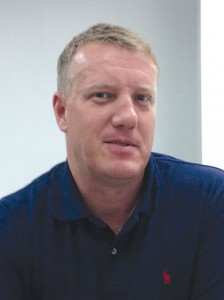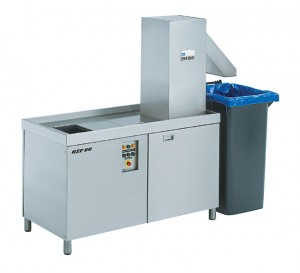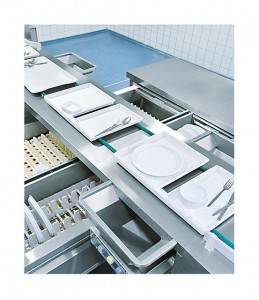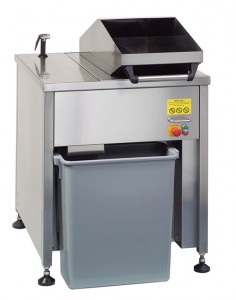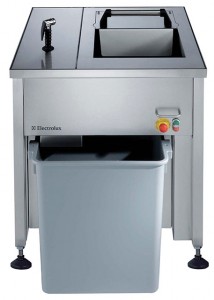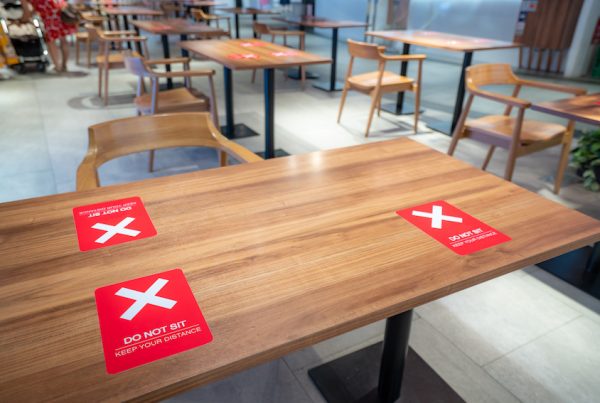Although kitchens adopt daily good practices, the amount of waste is still increasing. One of the most sustainable ways would be composting and turn it into another useful resource but not many places are equipped with the necessary equipment or knowledge to correctly process waste for this purpose as well as the labour required to do so. To bridge the gap, equipment manufacturers are adopting technology and coming forth with solutions to help the foodservice industry by reducing the volume of waste it produces to be safely processed for other uses. Below are the options to consider, whether independent and small kitchens or in multi-level buildings:
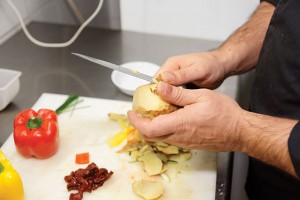 MEIKO FOOD WASTE TREATMENT SYSTEMS
MEIKO FOOD WASTE TREATMENT SYSTEMS
Speaking to Rudolf Kitzbichler, Regional Manager SEA regarding Meiko’s idea of waste management; he said food waste systems are often connected to bigger dishwashing facilities and available systems can reduce up to 80% in waste volume and weight. The outgoing (discharged) material can be composted to become soil, or processed by other sectors for various uses therefore reusing and recycling it.
Meiko’s most used machine is the compact system AZP 80 that can handle up to 450kg food waste or 320 kg mixed waste per hour. The AZP 80 pumps food waste with water through a grinder to be broken down into smaller particles. The grinder is located horizontally at the side of the water tank, so that cutlery is kept from falling into the grinder. Ground waste is then pumped in a dewatering screw column conveyor press, forcing the liquid out and waste is further compacted as it travels to the discharge route to the bin. The AZ 80 and AP 80 split system is made for up to 3 separate intake stations and one dewatering station, which can be at different rooms and floors. Pumps convey the refuse to the de-watering press and recirculate the water, used as transport media, back to the combined in-feed and grinding units.
Meanwhile the fully custom built WasteStar System further reduces the impact on the environment using vacuum as a means of transport instead of water. Food waste is transported from various areas such as dishwashing, potwashing and preparation areas to a central location, ideally in the basement. Operating with a predefined cycle or manual activation by a button, waste is extracted from the feeding stations through the pipes and into the grinder. The grounded waste is either going through a dewatering press in bins or stored fluidly in a collection tank until disposed of by a tank truck – no
need for temporary storage bins. Requiring only an interconnecting pipework to be installed within the building, it can help a food business in multi-level buildings cope without having workers pushing refuse through alleys and elevators to the disposal area.
http://www.meiko-asia.com/products/foodwaste-systems
ELECTROLUX WASTE MANAGEMENT SYSTEM
The Compact Integrated Pulper ensures that no matter the size of a restaurant, it can still help the environment by reducing its food waste on landfills and giving it a new lease to be converted to useful resources. Using the most compact system in the market also greatly cuts down the need for waste collection service trips, resulting in lesser emissions of CO2. The standalone unit is eco-conscious right from the design stage where its size efficient element means lesser resources used in manufacturing. Living up to its name, its components are all enclosed within one unit yet has the ability to process up to 300kgs of organic waste per hour. The pulper only requires water and electrical connections and as the crew loads food waste into the intake, it goes through the grinder and dehydrator, leaving only dry pulp in the waste bin.
For the large scale kitchen, the flexible Modular System allows the setting up of multiple waste intake stations and holding tanks at different points of the kitchen- preparation, cooking and dishwashing. The separate stations helps cut down on contamination between fresh food and waste. Organic waste are grinded to flow smoothly to the holding tanks that temporarily store waste and has an odour removal outlet. Waste then goes into the Centrifugal dewatering press where excess water is eliminated before the dry waste is placed into a bucket for disposal.
http://professional.electrolux.com/Products/Food-Service/Dishwashing_Equipment/Waste_Management_System/
HOBART WASTE TREATMENT
The Ecolo singular unit can process up to 7.5kgs of leftovers per minute while volume of waste is shrunk by up to 80% with its 2-phase-treating process which minimises energy and freshwater use by using re-circulated water. The waste is flushed into the water-filled pulper where the grinding disc breaks it down to pass through the strainer ring and to the bin. Users are advised to turn over the double sided deltacutting blades to prolong its lifespan.
WastePro comes as a close-coupled unit or engineered remote system. The former combines a pulper and water press into the single unit while the latter separates both so that you can place the water press closer to the disposal area. It is more flexible as multiple pulpers can be connected to one or more water presses and configured as an undercounter or freestanding unit.
http://www.hobart.com.sg/wExport_en/products/index.php?id=1303
THE ROLE OF GOVERNANCE
To improve the management of food waste, it is imperative for governments to step in because only it can establish certain regulations to get the foodservice industry to comply. Although food waste management compliance it is not enforced in this par t of the world, there are efforts to encourage it. In Singapore, its National Environment Agency has started the 3R Fund where any organisations in the countr y dealing with solid waste (excluding toxic and chemicals) can apply to receive up to 80% of cofunding from the government depending on the quantity and type of waste reduced or recycled. Priority is given to projects that pose low recycling rates and the food
industry is one of them. The following criteria for the grant include:
• Installation of innovative waste sorting or recycling systems/equipment; and
• Upgrading, installation or implementation of new system
• Redesigned process to reduce waste at production stage, including package design.
• New waste recycling infrastructure (chutes, containers or refurbishment work to provide storage space for recyclables).
More on the 3R Fund at http://app2.nea.gov.sg/grantsawards/3r-fund#grants
In Malaysia, a Bill regarding food waste is in the making and local company STREAM ENVIRONMENT is working on the idea of a pneumatic infrastructure pipeline that separates the food materials and the non-food items to ensure that the former is channeled to a proper treatment plant which will convert it to gas for energy. The system can be beneficial for high volume waste generation places such as hotels, food courts, and retail establishments with many restaurants under one roof or food processing plants but the company acknowledges that it would be easier to take off if there are laws in place.
http://www.stream-environment.com/food-waste-system


